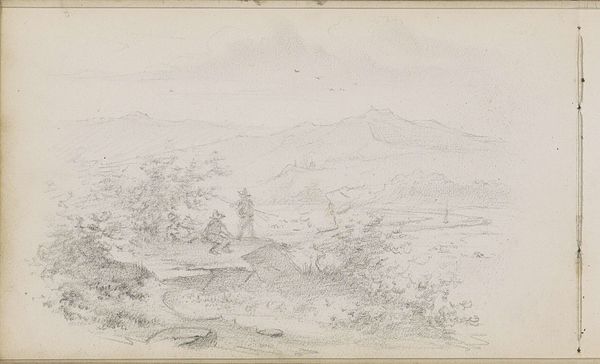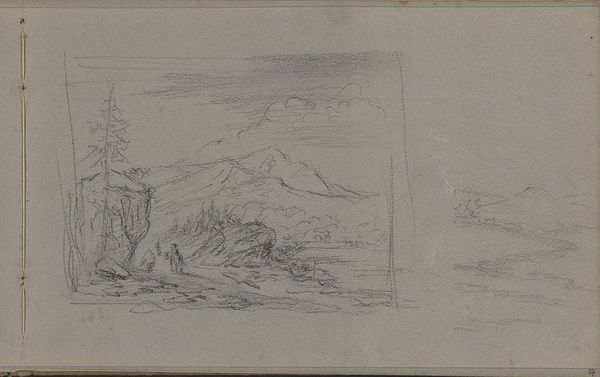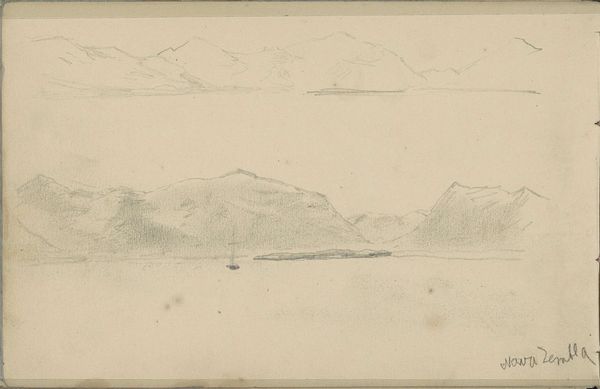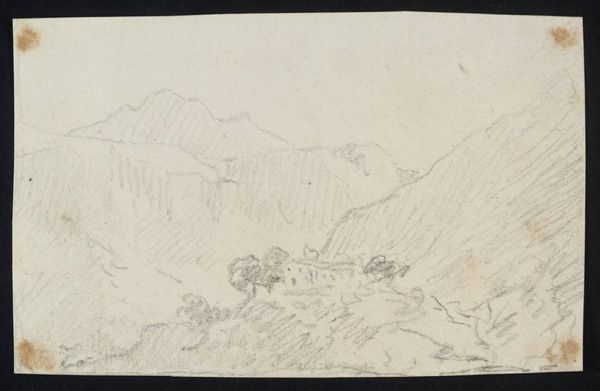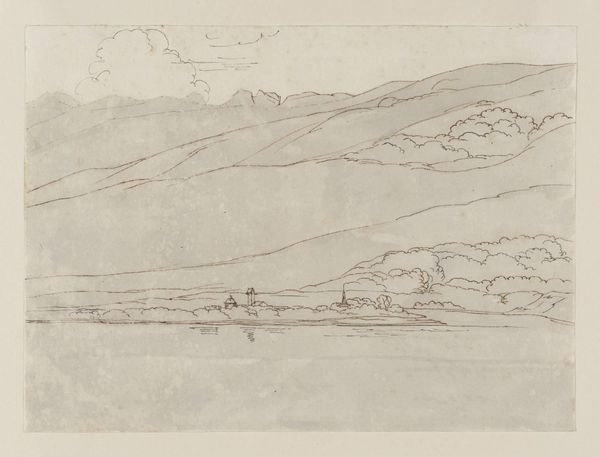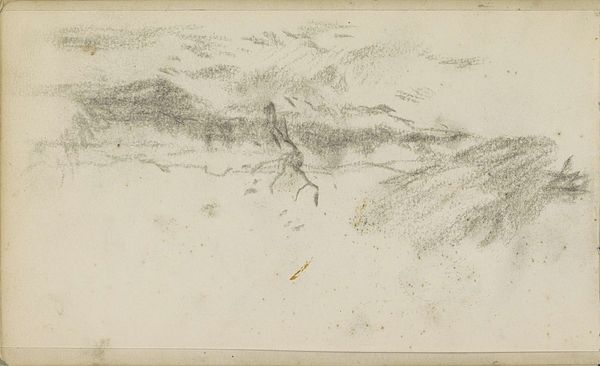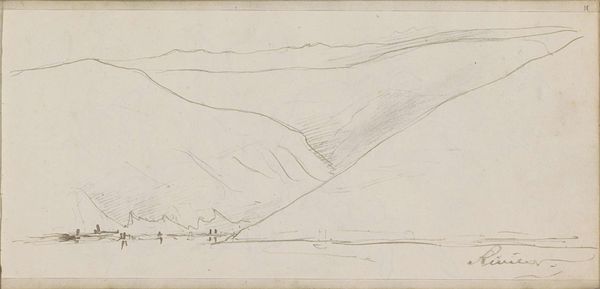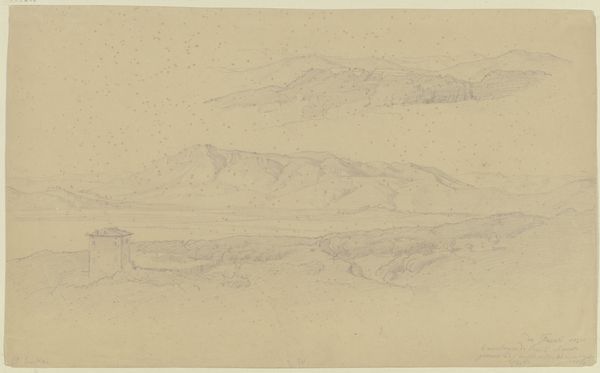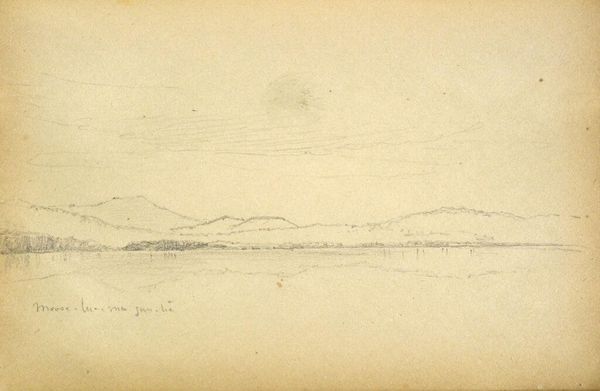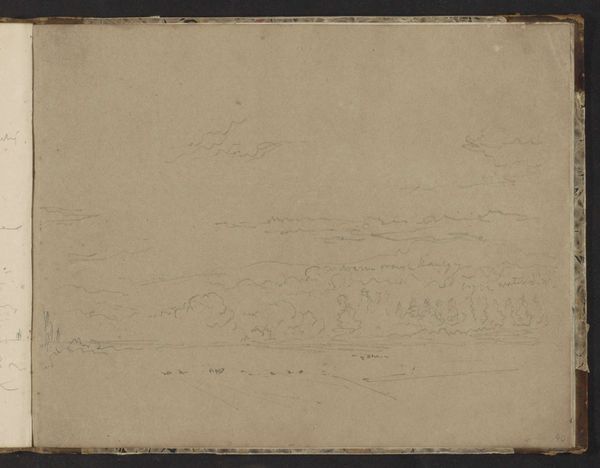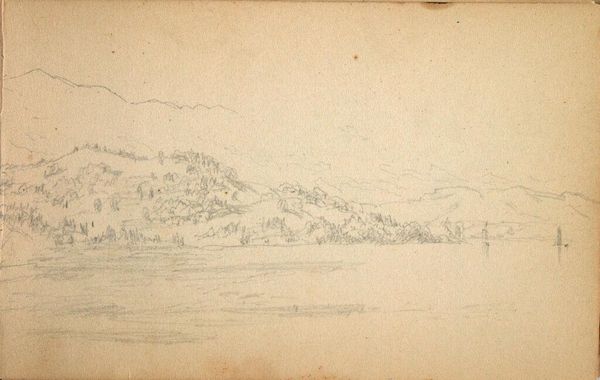
Dimensions: height 184 mm, width 282 mm
Copyright: Rijks Museum: Open Domain
Curator: This is Willem Cornelis Rip's "Berglandschap," or "Mountain Landscape," created in 1874 using pencil and frottage on paper. It's a captivating example of Romantic landscape art. Editor: My immediate reaction is one of quiet melancholy. The subtle pencil work creates a sense of distance, a muted palette that evokes a sort of yearning for a simpler, perhaps lost, connection with nature. Curator: I think that aligns well with Rip's context. During this period, landscape art often functioned as a symbolic space to express shifting notions of national identity and collective memory amid growing industrialization and social change. Romanticism certainly explored these anxieties. Editor: Indeed. The very *making* of it is interesting. The combination of pencil drawing and frottage – a technique of rubbing to create texture – speaks to the artist's process. What textures was he seeking? Stone, bark...? It implies a very physical interaction with the environment being represented, doesn't it? Curator: Exactly! It suggests that he was exploring not just what the landscape *looked* like, but its material essence as well. And this interplay is crucial for understanding the politics ingrained in landscape art. We must acknowledge who had access to such spaces and how they impacted the representation of landscapes. Were these spaces sites of leisure for the elite or lands used for labor? Editor: You're right to bring in access and labor. It reminds us that materials themselves—the pencils, the paper—come from somewhere and involve labor processes. The art isn't just about representing nature, but about nature as a resource, both for artistic production and societal development. Curator: Considering that the work depicts a mountain landscape, an enduring symbol in Romantic art of sublime nature, its faintness further deepens this exploration. The frottage might be seen as an early method of landscape "extraction," aesthetically mirroring mining. Editor: An extraction… interesting point. I hadn’t considered that. I was focused on the directness and physicality of rubbing. Thinking about the materials used brings another layer to our appreciation. Curator: Yes. Approaching this artwork through a multi-layered reading invites us to confront how our understandings of place, identity, and artistic production are constructed. Editor: So, the melancholic mood I felt initially is not just aesthetic, but also deeply interwoven with the means and relations of its production and socio-historical context. It's nature mediated by process, labor and power dynamics. Curator: Precisely. It gives the piece new and profound resonance for us today.
Comments
No comments
Be the first to comment and join the conversation on the ultimate creative platform.
